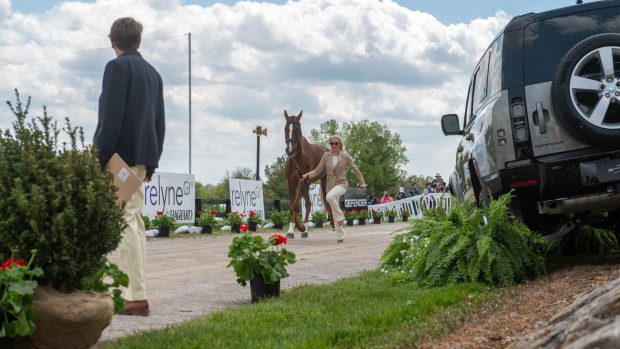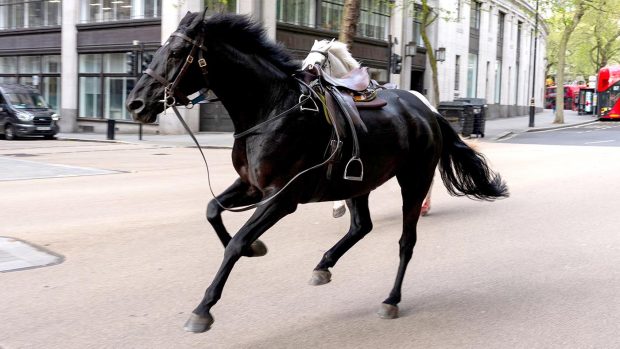Discussions around making cross-country safer without removing the challenge continue – as new data highlights where risk could potentially be reduced and scope to create course risk profiles.
In a newly published FEI-funded study, researchers at the universities of Glasgow, Bristol and Nottingham Trent aimed to identify cross-country fence risk factors using data from FEI eventing competitions between 2008 and 2018. Fences including corners and trakehners were identified as having increased odds of a horse or rider fall, compared to square spreads – and fences featured later on course, those with an approach and/or landing downhill or into water, and combinations, also had increased risk.
The researchers said it “should be considered” whether it might be possible to design around the “more challenging” fences, and suggestions included ensuring more challenging fences are not “over-represented” in the second half of the course, and including more alternative routes. They said the findings are the “first step” towards building a “risk profile or score” for every FEI cross-country course, which could be used to support the development of horses and riders, and be taken into account for qualification criteria.
Lead author Euan Bennet told H&H that although some of the findings might be “common sense”, the study provides quantification of the data.
“The really important thing that we want people to take away from this is we’re not suggesting that challenging fences should no longer be used – but we think we’ve identified that it’s possible to design around some of these more difficult elements,” he said.
“It’s not about making things easier, it’s about making things safer; having course-design that prioritises safety without detracting from that challenge. We think the results show that’s possible so that’s why we’d like to open up more of a discussion on that.”
Difficulty
The topic of cross-country difficulty and eventing safety and falls has been discussed at length this year, with Bramham course-designer Ian Stark sharing concerns around the sport’s future direction, and riders including Piggy March and Pippa Funnell speaking out against “dumbing down” courses (news, 23 June).
Badminton course-designer Eric Winter told H&H the study is “interesting” but that there is a “difficult line to walk” when it comes to course-design.
“Course-designers don’t want to see a horse on the ground. We absolutely hate that and try to prevent it as much as we possibly can. You don’t get to run a horse round the cross-country beforehand and you can’t tell how things are going to ride. It might ride perfectly for 90 horses and the 91st will fall,” he said.
“Course-design is an art, it’s not a factory-produced widget where thousands come out the same – it’s to do with the piece of ground you have. You could say don’t use downhill stuff and only build on the flat, but when you have horses travelling at 570 metres a minute and they’re a little bit tired, all sorts of unpredictable things can happen.
“It’s a really difficult thing because it’s easy to say X percentage of horse falls were at water jumps – so what do you do about that? You take water out of the competition. Then you say X percent of falls were at fences with a roof over the top, and you take those out. Before long you’ve only got logs left, and you end up galloping around a grass field. Without challenge, there’s no value.”
Mr Winter added that he would like to see future research around qualification.
“There are horses qualifying at the moment without doing some of the key challenges – they’re qualifying at four-star to go five-star without actually landing in a water jump. When a horse at four-star doesn’t have to perform that exercise to qualify, it leaves the sport at risk,” he said.
An FEI spokesman told H&H the study has allowed the FEI to “gather insights” regarding eventing risk management. The FEI eventing risk management steering group will review the conclusions and discuss these at the eventing safety seminar in January.
You might also be interested in:

Debate rages on ‘dumbing down’ cross-country as safety work continues

Course-designer Ian Stark on Bramham’s cross-country: ‘The sport is vulnerable and we need to ask questions about what direction we’re going in’

Eventing risk profiles could help reduce cross-country falls

Subscribe to Horse & Hound this spring for great savings
Horse & Hound magazine, out every Thursday, is packed with all the latest news and reports, as well as interviews, specials, nostalgia, vet and training advice. Find how you can enjoy the magazine delivered to your door every week, plus options to upgrade your subscription to access our online service that brings you breaking news and reports as well as other benefits.




